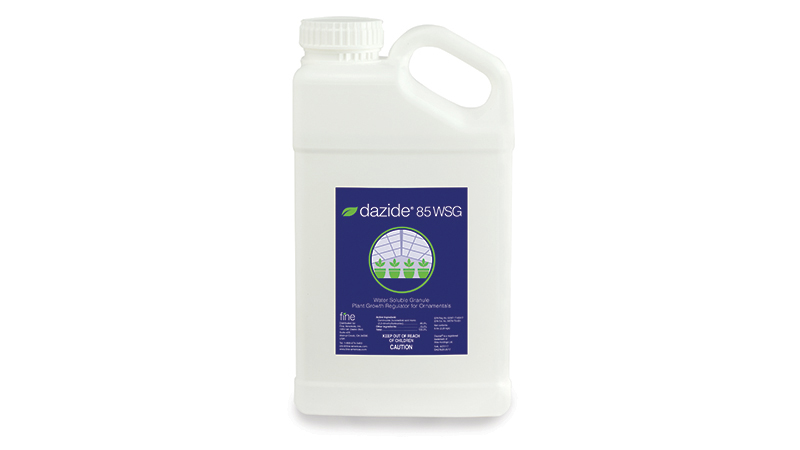Design Innovations for Greenhouse Expansions

It is best to consider sites with optimal energy sources, energy suppliers, and utility rate structures for new construction. Photo: I-Hsin Orchids
Many businesses are in expansion mode, and it can be tempting to rush buildouts to meet production schedules. However, good design requires attention to detail. Take the time to consider and implement efficient strategies to accelerate the return on investment (ROI) of upgrades and retrofits. As many growers plan upgrades, all have the same choice: optimize (retrofit existing facilities) or expand (find sites for new greenhouses). There are pros and cons to both, and the availability of land and capital may drive this choice.
Start with a Blank Slate
Some operations may have enough land to build new greenhouses acres at a time. When building new facilities, energy may not be prioritized above other market factors like proximity to retail partners and population centers. However, energy costs are the second largest operational expense driving greenhouse profitability (the first being labor costs). Consider sites with optimal energy sources, energy suppliers, and utility rate structures.
Energy Sources:
- Does your preferred site have natural gas service? Greenhouse heating drives the majority of greenhouse energy consumption.
- What fuels will be used if natural gas is not available? Where will they come from? Understand how much it might cost to secure your fuel supply.
- What is the size of the site’s electric service? Utility service extensions and upgrades can take years.
- How reliable is the grid (how often do outages occur, and how long is the typical outage)? Confirm maximum frequency and length of outage tolerable to the business.
- Will alternative energy sources provide off-grid power solutions? Consider the cost-effectiveness of combined heat and power (CHP) systems as well as renewable energy sources like solar.
- Will energy storage systems be used? Understand if thermal storage could reduce heating demand and if battery storage would complement renewable energy systems.
Energy Suppliers:
- Will the business use electricity from the grid? Businesses may consider ‘islanding’ from the grid to mitigate risk and reduce energy costs.
- Are utilities in the site’s region regulated or deregulated? Regulated utilities are monopolies whereas deregulated markets allow for competition.
- Do regulations in the site’s region allow customers to choose their energy suppliers? In deregulated markets, consumers can choose among many energy suppliers.
- Will Power Purchase Agreements (PPAs) be used for sourcing power? Businesses can use PPAs to negotiate for optimal energy prices and source off-site renewable energy.
Utility Rate Structures:
- What is the business willing to pay for electricity (for example, $/kWh) and natural gas or delivered fuels (for example, $/therm or $/gal)? Estimate potential monthly bills based on a forecast for usage and demand.
- What will be the rate structure for electric and natural gas service (for example, large commercial business rate)? Greenhouses are considered large energy users and usually incur demand charges. Businesses in some regions may qualify for time-of-use rates which offer lower rates during off-peak periods.
- What is the typical demand charge for the site’s electric utility (for example, $/kW)? Demand charges are incurred for the 15-minute period of each month with the highest electric demand. Businesses in some regions may qualify for demand response programs which offer financial incentives for shifting load to off-peak time periods.
Commit to Continuous Improvement
For many reasons, some businesses use a phased approach to upgrade existing systems, bay by bay. A phased approach to replacing systems can be cost-effective and minimize risk by reducing impacts to production like downtime. Retrofitting is often worth the effort for systems like horticultural lighting, fans, pumps, and greenhouse curtains, which can have quick payback periods and can often receive financial support from utility rebates and grants from the federal government.
Describe Your Project Must-Haves
Retrofits and new construction projects alike need clear performance requirements. List them in an Owner’s Project Requirements (OPR); this describes what success looks like and guides your vendors to provide solutions that meet your needs. Included in OPR documents are requirements for occupancy and space use, design objectives for major building systems, performance criteria, and sustainability goals. For example, an OPR for a new greenhouse might convey that its lighting and HVAC equipment must satisfy a year-round crop production schedule, comply with energy code requirements, and meet minimum efficiency standards. Ensure that regional considerations are included in OPRs; for example, describe what local energy code requirements impact which elements of the project.
Understand the ROI of High-Performance Materials and Systems
When calculating project costs, understand the return on investment of high-performance system choices. Buying less expensive equipment may save dollars today, but the life-cycle costs of choosing cheap equipment will cancel out those savings many times over. Consider how rebates and grants can create a capital stack for your project to cover some costs and speed up payback periods of investments in innovative systems. In some regions, economic development agencies may provide funding for agricultural producers for equipment purchases and facility construction.
There is a lot of money on the table for new greenhouse construction in North America. A recent new buildout supported by Energy Resources Integration (ERI)’s engineering team received $5 million in guaranteed loans from USDA for LED horticultural lighting systems, efficient chillers, and high-performance automation equipment.
Retrofits can win big, too. A recent greenhouse lighting retrofit project supported by ERI received a grant from USDA for 50% of project costs while the local utility covered another 25%, cutting down the project’s payback period to less than one year.
Take advantage of opportunities for funding greenhouse design innovation with experts; engineers at ERI can help identify solutions and find funding for any project type or size.










